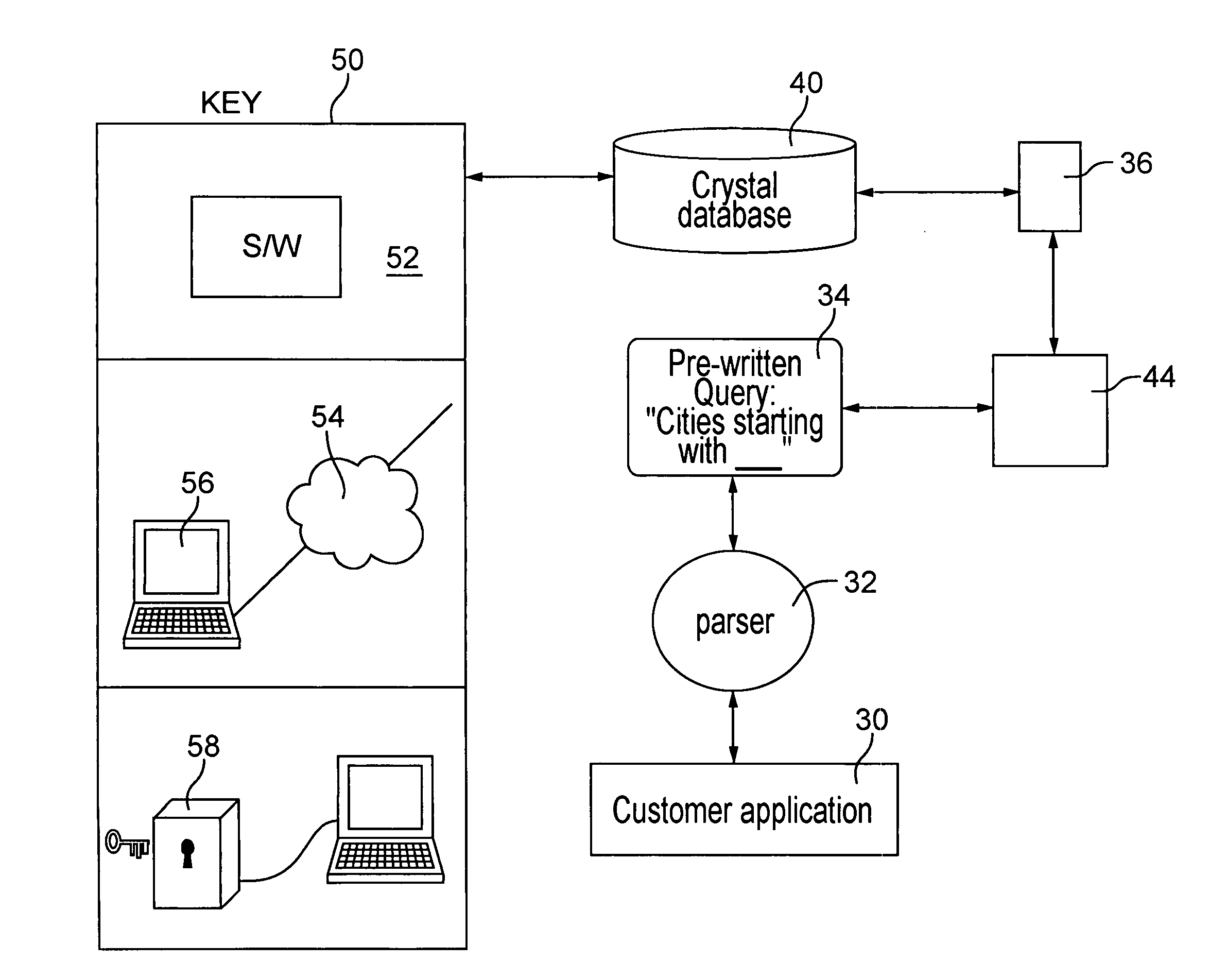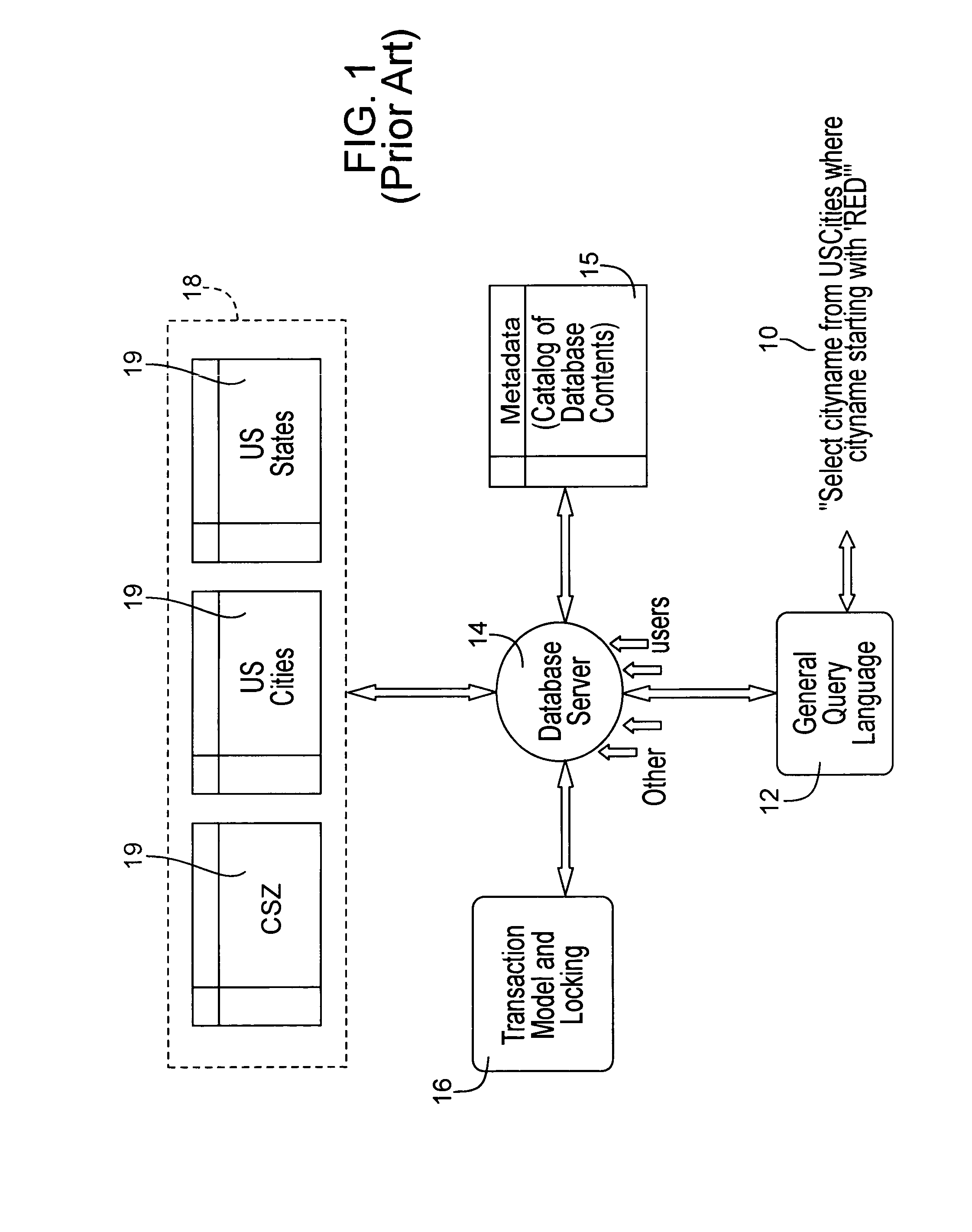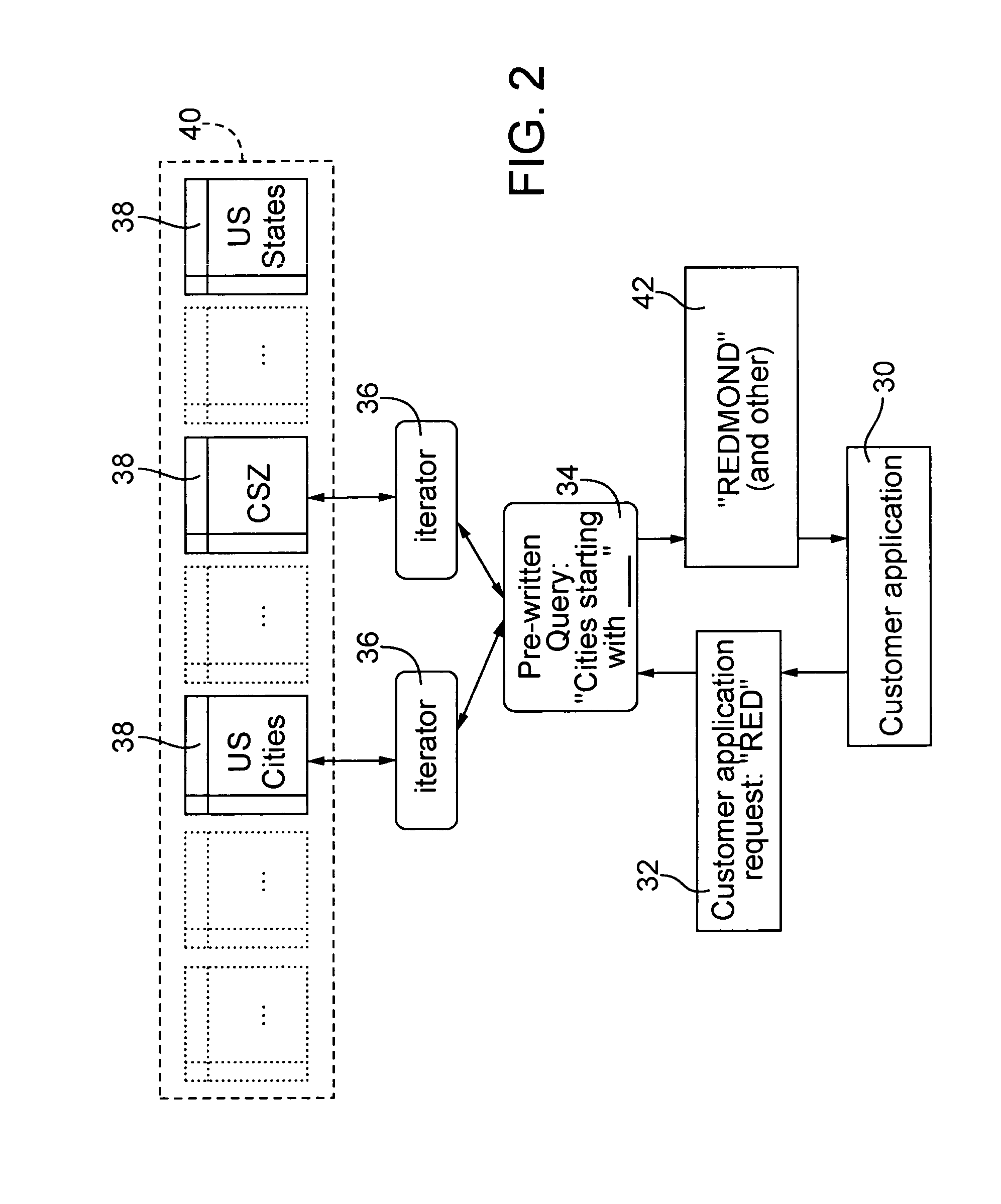Controlled-access database system and method
a database system and database technology, applied in the field of controlled access database systems, can solve the problems of large amount of memory for storage, large utility of traditional databases, and inability to meet so as to reduce the requirements of data storage memory, reduce the effect of high volume and rapid data access rates
- Summary
- Abstract
- Description
- Claims
- Application Information
AI Technical Summary
Benefits of technology
Problems solved by technology
Method used
Image
Examples
Embodiment Construction
[0037]Although embodiments of this invention can be used for various purposes, preferred embodiments involve use of the invention in automated data capture and perfection systems. However, this invention should not be limited to use in such context, as other uses or embodiments equally fall within the scope of the present invention.
[0038]Automated data capture and perfection typically involves a customer application that receives an input of data and then uses a reference database to compare the input data for correction or verification. FIG. 2 illustrates a preferred embodiment in accordance with the present invention. With reference to FIG. 2, a customer application 30 identifies a requirement for data 32. The customer application 30 has access to a query 34 of a predefined type for requesting data from a crystal database 40. Depending on the type of requirement for data 32, a query 34 directs one or more iterators 36 to extract data from one or more data crystals 38 comprising th...
PUM
 Login to View More
Login to View More Abstract
Description
Claims
Application Information
 Login to View More
Login to View More - R&D
- Intellectual Property
- Life Sciences
- Materials
- Tech Scout
- Unparalleled Data Quality
- Higher Quality Content
- 60% Fewer Hallucinations
Browse by: Latest US Patents, China's latest patents, Technical Efficacy Thesaurus, Application Domain, Technology Topic, Popular Technical Reports.
© 2025 PatSnap. All rights reserved.Legal|Privacy policy|Modern Slavery Act Transparency Statement|Sitemap|About US| Contact US: help@patsnap.com



